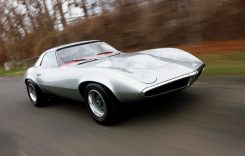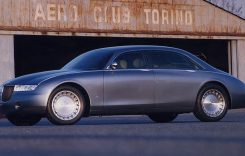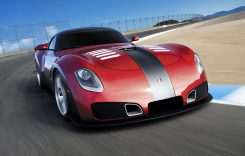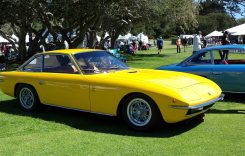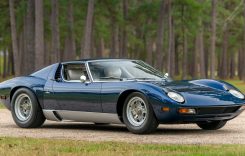For those that value acceleration and handling, and aren’t afraid of paying for it, Yamaha’s WR250R ($6990) is a worthy choice. The WR borrows technology from the YZ line of dirt bikes, giving it superior performance both off-road and on.

Set your eyes on the Yamaha and it’s clear that it is more oriented with the dirt world than street. From the brawny contour of its aluminum frame to the clean and uncluttered look of the engine, the blue bike has a tidy package that just screams performance.
“The Yamaha looks most like a real dirt bike,” says Agustin. “It looks meaner than the other bikes. Even the seat looks taller which kind of intimidated me at first.”
As Agustin mentioned, the Yamaha is the tallest bike in the group. With a seat height of 36.6 inches it’s well over two inches loftier than the CRF and more than an inch higher than the Kawi. While this wasn’t an issue for us six-foot tall guys, it’s a challenge for shorter riders to get both feet planted on terra firma.
“I really liked the Yamaha’s ergos as a whole,” tells six-foot-five, Gauger. “If you’re a tall rider than this is the bike for you. But if you’re not that tall or new to riding, the Yamaha might be a little intimidating.”
“I had a hard time getting comfortable on it,” reveals Agustin (6’1”). “On the street I didn’t have any problems but on a few of the trails it got tricky at times; like when we had to flip a U-turn or climb up a steep hill. Sometimes I had to stand on my tippy toes and I had a hard time holding the bike upright.”
Although the Yamaha is a bit top heavy at times a trip to the scales proves that it is still a fairly lightweight motorcycle weighing 299 pounds. That’s one pound more than the Kawasaki, but 21 fewer than the CRF.
Thumb the starter and the blue bike fires to life immediately, every time. Like the Honda, its fuel injection settings are calibrated well allowing it to ridden right away without the prerequisite high-rpm idle of the Kawasaki. Grab a hold of the clutch and it offers a light lever pull, however, it isn’t quite as wispy as the green or red bikes. Instrumentation is more basic too and it’s missing a tachometer and fuel gauge. It does have a low fuel warning light and a handy mile counter that helps you know how many miles you can travel before the tank is completely dry.
(Left) A dirt bike with a headlight, tail light and license plate: That is the essence of the WR250R.. (Center) The Yamaha ate up everything we threw at it. It is an amazing motorcycle that loves to be ridden hard. Right) The WR250R’s ergonomics are well suited to taller folks that routinely ride off-road. They were also well-like by our tallest test rider (6’5”).
On the road the Yamaha plays the part of a true dirt bike. The engine emits a bit of vibration and also puts out the most noise, too. In the sound test the blue bike had the loudest bark emitting 75 dB at idle and 90 dB at half throttle. Despite being a few points higher than the ultra-quiet Honda it wasn’t obnoxious and added a degree of excitement, especially when the rider grabs a handful of throttle and lets the engine rev out. The handlebar has a conventional yet relaxed-style bend and the seat provided good support. It wasn’t quite as accommodating as the street-friendly Honda but wasn’t so bad that any of us complained.
While the WR performed well on the street where it really shined is on the trail. Here its higher-spec suspension allows it to be ridden faster and with less effort. Whether you’re blasting across sand wash or smashing over big rocks the Yamaha’s suspension tackles all of it with ease and still somehow manages to give a nice, plush ride on the pavement. The ability to fine-tune suspension compression and rebound settings is another nice touch.
(Top) The WR’s instruments were the most basic. We did like its low fuel mileage counter. (Centers) Even on the street the WR performed well but the engine did buzz more than the others. The Yamaha’s 250cc water-cooled Single packs the most punch yet it’s smooth and easy to manage. (Below) It’s hard to find fault with the way the Yamaha handles off-road or on. This is truly an excellent motorcycle.
In the acceleration tests the Yamaha got up to speed the quickest. Its zero-to-60 mph time of 7.3 seconds was more than a second faster than both the Kawasaki and Honda. It also registered the fastest quarter mile run of 15.57 seconds with top speed of 81.6 mph. Upon review of the dyno graph it’s apparent the WR offers superior engine performance. Initially it pumps out the least amount of torque until around 6000 rpm. After that it keeps generating power while the other engines begin to sign off. Nearly 15 lb-ft of peak torque is available at 8400 revs. Although maximum output arrives at a higher rpm, you get nearly two ft-lb more than the Kawasaki and more than one lb-ft more than the Honda. The power disparity was even greater in terms of horsepower where it trumped the competition by upwards of five ponies with its 24.07 hp at 9100 rpm.
“It’s quite obvious which bike has the most power,” says Gauger. “The WR just plain rips. Maybe it doesn’t have as much acceleration at lower rpms as the other bikes but get the engine revving and it’s not even a comparison. The extra power really helped on trails and in the sand as it helped the bike skim over bumps.”
“The Yamaha was faster for sure,” agrees Agustin. “But you have to rev the engine so high to get it to go. I’m not saying that it’s bad but it made me pay more attention to riding in the right gear.”
Since the engine in the WR produces the highest amount of power it shouldn’t be a surprise that it delivered the poorest fuel economy. We recorded an average figure of 56 mpg which was one mpg down on the green machine and eight lower than the Honda. But since the fuel tank has a tiny bit more capacity (2.1-gallon) the Yamaha rider still has a range of 117 miles between fill-ups.
Both on the street and on the trail the WR’s brakes got the job done. They were easy to modulate on loose rocks yet still had ample power as evident in the braking test with it able to stop from 60 mph in 118 feet (best in class).
With its taller seat and trusty dirt bike-style ergos the WR might be more demanding for some to ride. Still, those that are willing to make a sacrifice will experience a ride like no other. From the smooth yet strong top-end power of its rev-happy engine to its accurate and sure footed chassis, the Yamaha offers poise that the competition simply can’t match.
While the Yamaha is clearly the superior bike in this test, you’re going to have to pay for it. With its MSRP just below seven grand it’s literally thousands more than either the Kawasaki or Honda. But as you’re Grandpa used to say, ‘you get what you pay for’ so if you’re seeking the finest 250 dual-sport, than the WR is the bike you need in your garage.
